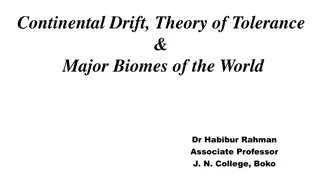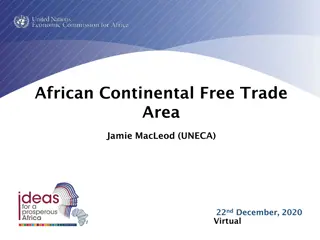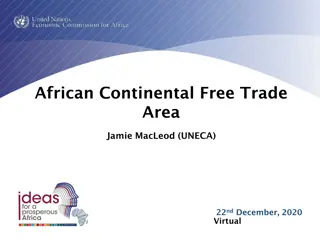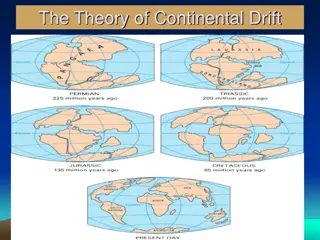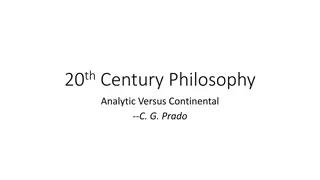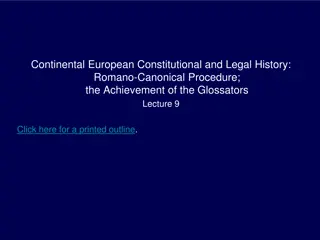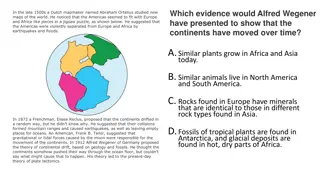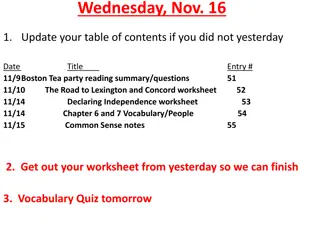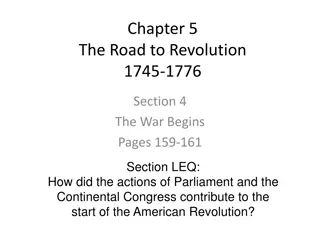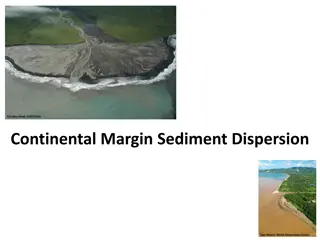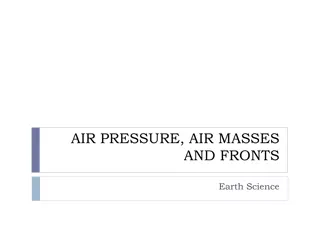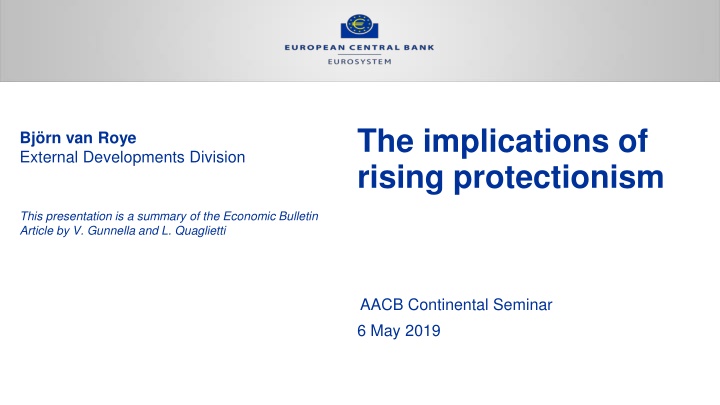
Implications of Rising Protectionism in Global Trade Landscape
Explore the impact of rising protectionism on global trade, public support, and economic activities as outlined in a presentation summarizing key messages from the Economic Bulletin article. The shift in trade measures, timeline of tariffs, US-China trade impacts, and circumvention strategies by US firms are discussed.
Download Presentation

Please find below an Image/Link to download the presentation.
The content on the website is provided AS IS for your information and personal use only. It may not be sold, licensed, or shared on other websites without obtaining consent from the author. If you encounter any issues during the download, it is possible that the publisher has removed the file from their server.
You are allowed to download the files provided on this website for personal or commercial use, subject to the condition that they are used lawfully. All files are the property of their respective owners.
The content on the website is provided AS IS for your information and personal use only. It may not be sold, licensed, or shared on other websites without obtaining consent from the author.
E N D
Presentation Transcript
The implications of rising protectionism Bj rn van Roye External Developments Division This presentation is a summary of the Economic Bulletin Article by V. Gunnella and L. Quaglietti AACB Continental Seminar 6 May 2019
Rubric Key messages Trade integration has slowed over the last decade. Along with these developments, public support for trade openness has declined, while protectionism has increased globally. US tariffs against China target, in particular, the electronics and machinery sectors. The impact on economic activity in the country imposing tariffs depends on a) whether imported goods can be substituted by domestic production, and b) whether trading partners retaliate. In a trade dispute involving two countries, third countries may temporarily benefit from rising protectionism. However, an increase in uncertainty, coupled with financial stress, could also amplify the adverse impact of rising protectionism on economic activity. 2 www.ecb.europa.eu
Rubric Trade landscape has undergone transition New trade measures announced (left-hand scale: number; right-hand scale: percentages) Sources: Global Trade Alert database. Notes: Data have been adjusted for reporting lags. The cut-off date for each year is 31 December. 3 www.ecb.europa.eu
Rubric Protectionist threats have been followed by concrete actions Timeline of tariffs proposed and implemented in 2018 (USD billions) Sources: Peterson Institute for International Economics, United States Trade Representative and ECB calculations. Notes: The values of imports affected by the tariffs on washing machines and solar panels, and steel and aluminum refer to estimates produced by the Peterson Institute for International Economics. The percentages in brackets indicate the size of the applied tariffs. 4 www.ecb.europa.eu
Rubric US-China trade largely affected, globally still limited US tariffs and China s retaliation measures: shares of US, Chinese and global trade affected (percentage of total goods trade for the United States, China and the world) Sources: IMF and ECB staff calculations. 5 www.ecb.europa.eu
Rubric US firms have circumvented tariffs by frontloading imports from China US imports from China and tariff implementation (t = months of tariff implementation) Sources: Census and ECB staff calculations. Note: The data shown in the chart are for nominal imports. 6 www.ecb.europa.eu
Rubric Some indications for trade diversion Chinese imports of vegetable products by counterparty (USD millions) Sources: CEIC and ECB staff calculations. Notes: The shaded areas show the range of values for imports of vegetable products from the United States and Brazil for each month of the year in the period 2010-17, in order to show the typical seasonal pattern. The latest observation is for September 2018. 7 www.ecb.europa.eu
Rubric Financial markets remained confined to targeted sectors Sectoral developments of equity returns (x-axis: sectoral trade openness as a percentage; y-axis: cumulated percentage return after six tariff announcements) Sources: Haver Analytics, Bloomberg and ECB calculations. Notes: The chart shows the cumulated shares reaction following six major US and China tariff announcements since the beginning of 2018. Sub-industries classified according to the eight-digit Global Industry Classification Standard (GICS) of the S&P 500 sectoral indexes were matched to imports/exports and value added data according to the three-digit and four-digit North American Industry Classification System (NAICS). Sectoral trade openness is calculated as the sum of imports and exports divided by gross value added in the respective sub-industry in 2016. The latest observation is for 5 October 2018. The GICS sub-industries shown in the chart constitute 35% of the market capitalisation of the five underlying sectors in the S&P 500 for which trade and value added data were available (Materials, Industrials, Consumer Discretionary, Consumer Staples and Information Technology) and 20% of the total market capitalisation of the S&P 500. The NAICS classifications used constitute 58% of the total US trade in goods in 2016. 8 www.ecb.europa.eu
Rubric Trade policy uncertainty led EA exporters to curb investment Change in the investment-to-total-asset ratio of firms positively/negatively affected by tariffs (year-on-year percentage change in investment-to-total-asset ratio) Source: Non-financial corporations (NFCs) in the Dow Jones Euro Stoxx 300 index. Notes: The sample consists of NFCs in the Dow Jones Euro Stoxx 300 index and varies over time owing to data availability. The measure shown is the year-on-year percentage change in investment-to-total-asset ratio, defined as the ratio of capital expenditure to total assets. NFCs are grouped on the basis of whether they are positively (blue) or negatively (yellow) affected by the threat of tariffs in the simulations. 9 www.ecb.europa.eu
Rubric Further escalation may derail trade further Change in the investment-to-total-asset ratio of firms positively/negatively affected by tariffs (year-on-year percentage change in investment-to-total-asset ratio) Source: ECB calculations. Notes: The results are a combination of the direct trade effects derived from the GIMF model and the confidence effects modelled using the ECB s global model. 10 www.ecb.europa.eu
Rubric Trade tensions have long-term effects on US trade Estimated impact of an escalation in trade tensions on trade long-term effects (x-axis: sectoral trade openness as a percentage; y-axis: cumulated percentage return after six tariff announcements) Sources: World Input-Output Database (2016 release) and ECB staff calculations. Notes: Changes in total real exports and imports have been aggregated from changes in sector-level real bilateral trade by using shares of corresponding nominal values. Nominal bilateral sector-level trade changes have been deflated by the respective price changes. The euro area includes both intra- and extra-euro area trade. CN is used as an abbreviation for China. 11 www.ecb.europa.eu
Rubric Conclusions and outlook Taken in isolation, the repercussions of the tariffs implemented in 2018 pose only a modest adverse risk to the global and euro area outlooks. If trade tensions were to escalate once again, however, the impact would be larger. Trade liberalization within the framework of multilateral cooperation has been a key factor driving global economic prosperity. 12 www.ecb.europa.eu



